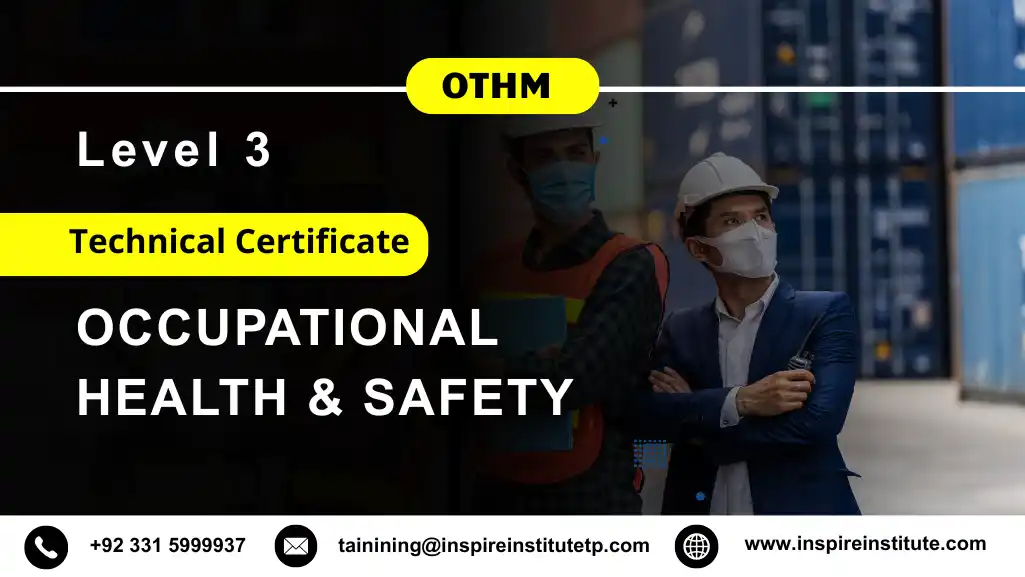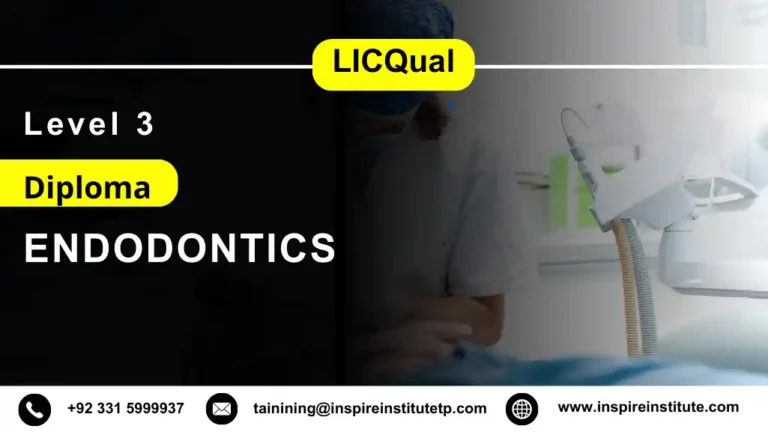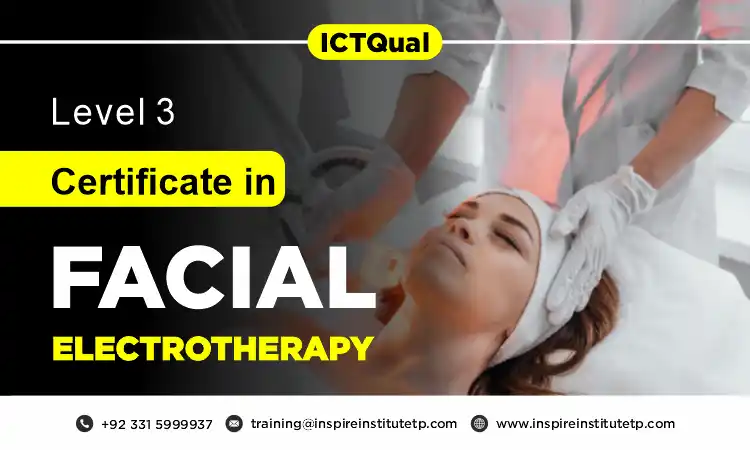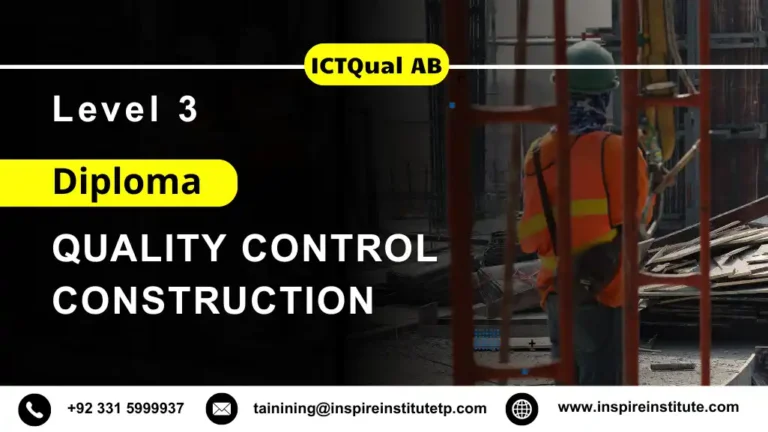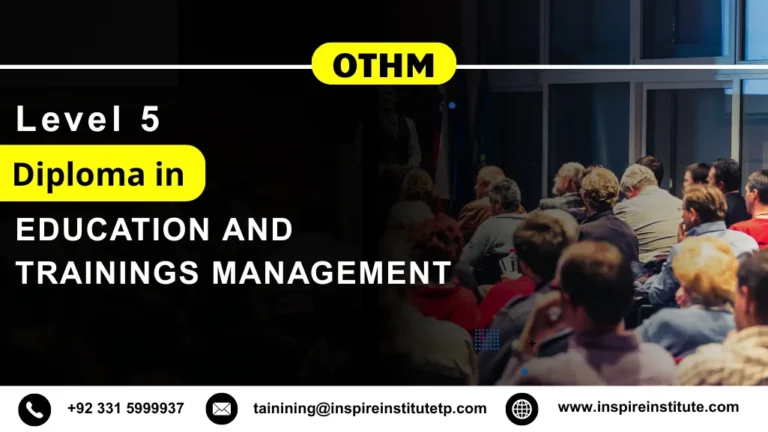OTHM Level 3 Technical Certificate in Occupational Health and Safety
The OTHM Level 3 Technical Certificate in Occupational Health and Safety offers a strong foundation for professionals seeking entry-level roles in this essential field. This course provides learners with a clear understanding of key workplace safety principles, legal frameworks, and practical risk management strategies—ideal for those aiming to improve workplace wellbeing across various industries.
Recognized internationally, this qualification is tailored to meet the needs of modern employers and safety standards. It emphasizes hands-on learning, helping students identify hazards, carry out risk assessments, and implement robust health and safety procedures. Whether you’re just starting out or looking to formalize your knowledge, the OTHM Level 3 certificate sets the stage for a successful career in occupational health and safety.
Why Choose this Qualification
The OTHM Level 3 Technical Certificate in Occupational Health and Safety stands out as a practical and industry-relevant qualification that equips learners with the essential knowledge and skills to thrive in the safety sector. Whether you’re new to health and safety or seeking formal recognition for your experience, this course offers tangible benefits that support your career development.
Key Reasons to Choose This Qualification:
- Globally Recognized Certification
This qualification is accredited and recognized internationally, giving you access to employment opportunities around the world in both public and private sectors. - Strong Foundational Knowledge
It provides a thorough introduction to occupational health and safety principles, making it suitable for beginners and those transitioning into the field. - Practical Skill Development
Focused on real-world application, the course emphasizes essential tasks such as hazard identification, risk assessment, and control measures. - Career Progression Pathways
Successfully completing this course opens the door to advanced studies such as the Level 6 Diploma in Occupational Health and Safety, enhancing long-term career prospects. - Compliance and Legal Awareness
Learners gain an understanding of legal obligations, workplace regulations, and how to ensure compliance in a variety of work environments. - Workplace Relevance
The qualification is designed to meet the current needs of employers, ensuring that learners are job-ready and equipped to improve health and safety standards. - Flexible Learning Options
Ideal for working professionals, the course is often available through flexible delivery methods including online and part-time study options.
Choosing the OTHM Level 3 Technical Certificate is more than just earning a qualification—it’s a strategic investment in your future, helping you contribute to safer and more compliant workplaces.
Course Overview
Ofqual Regulated Qualification
Course Level: 3
Average Completion Time:
4 to 6 Months
Study Units: 3 Units
Evidence & Assignment Based
Qualification Structure
The OTHM Level 3 Technical Certificate in Occupational Health and Safety consists of 3 mandatory units for a combined total of 34 credits, 340 hours Total Qualification Time (TQT) and 220 Guided Learning Hours (GLH) for the completed qualification.
Mandatory Units
- Health and Safety Principles in the Working Environment (10 credits)
- Maintaining a Healthy and Safe Working Environment (14 credits)
- Principles of Risk and Incident Management in the Working Environment (10 credits)
Who Should Take This Course
The OTHM Level 3 Technical Certificate in Occupational Health and Safety is designed for individuals who are passionate about creating safer workplaces and want to build or advance a career in health and safety management. Whether you’re entering the field for the first time or aiming to formalize your existing experience, this course is an ideal starting point.
This course is suitable for:
- Aspiring Health and Safety Officers
Individuals seeking to launch a career in occupational health and safety, especially in construction, manufacturing, healthcare, logistics, or office environments. - Entry-Level Professionals
Those currently working in operational or supervisory roles who want to add formal health and safety qualifications to their credentials. - Health and Safety Assistants or Coordinators
Existing staff who support safety initiatives in their organizations and are looking to boost their knowledge and effectiveness. - Managers and Team Leaders
Line managers or supervisors who are responsible for overseeing staff and maintaining a safe working environment. - Career Changers
Professionals from other fields who want to transition into the growing field of occupational health and safety. - International Students or Workers
Individuals seeking a globally recognized qualification to improve their employment prospects in different countries or sectors.
If you’re committed to promoting a culture of safety and want a qualification that blends theory with practical application, this course offers the ideal path to building your confidence and capabilities in occupational health and safety.
Course Benefits
The OTHM Level 3 Technical Certificate in Occupational Health and Safety offers a wide range of benefits that make it a valuable investment for anyone looking to establish or grow a career in health and safety. This qualification not only enhances your professional skillset but also improves your ability to contribute meaningfully to a safer working environment.
Career Advancement Opportunities
- Gain a competitive edge in the job market
- Qualify for roles such as Health and Safety Officer or Safety Coordinator
- Lay the foundation for advanced qualifications like the Level 6 Diploma in Occupational Health and Safety
Industry-Relevant Knowledge
- Learn key topics including hazard identification, risk control, and emergency planning
- Understand international safety standards and legislation
- Develop a practical skill set applicable across industries
Increased Workplace Value
- Become an asset to your organization by enhancing health and safety protocols
- Reduce workplace accidents and ensure compliance with safety laws
- Improve organizational safety culture and employee well-being
Recognized and Respected Qualification
- Accredited by a globally recognized awarding body
- Meets industry expectations and employer requirements
- Enhances your CV and professional credibility
Flexible Learning Pathways
- Study options include full-time, part-time, or online formats
- Suitable for professionals balancing work and education
- Learn at your own pace without compromising quality
Supports Personal Growth and Responsibility
- Builds confidence in managing safety responsibilities
- Encourages leadership, accountability, and proactive thinking
- Equips learners with transferable skills useful in multiple sectors
This course is not just a stepping stone but a career catalyst—empowering you with the credentials, knowledge, and confidence to take your place in a vital, fast-growing field.
Eligibility Criteria
The OTHM Level 3 Technical Certificate in Occupational Health and Safety is structured to accommodate a diverse range of learners, including school leavers, working professionals, and career changers. To ensure learners can successfully engage with and benefit from the course, the following entry requirements should be met:
Age Requirement
Learners must be 16 years of age or older at the time of enrollment.
This makes the qualification suitable for school leavers, early-career professionals, and mature students seeking to develop or change career paths.
Educational Background
There are no strict academic prerequisites; however, learners are expected to have a Level 2 qualification (such as GCSEs or equivalent) or comparable practical knowledge.
Individuals without formal education may still be accepted based on work experience or employer recommendation.
Work Experience
No prior work experience is required, making this an ideal entry-level qualification for those new to the field of occupational health and safety.
However, those already working in roles such as junior safety officers, team leaders, or site supervisors will benefit from gaining a recognized certification that supports their practical knowledge.
English Language Competency
As the course and assessments are conducted in English, learners should have a minimum English language proficiency equivalent to CEFR Level B1 (Intermediate level).
This includes the ability to understand workplace instructions, write reports, and communicate effectively in a health and safety context.
Non-native English speakers may be asked to provide evidence of English competency, such as an IELTS score of 4.5 or above, or equivalent.
Additional Consideration
Some training providers may conduct a basic skills assessment or interview to evaluate the learner’s readiness for the course.
Motivation, commitment to health and safety, and the ability to follow instructions are key traits that support successful course completion.
This inclusive entry policy ensures that individuals from various educational and professional backgrounds can access a rewarding qualification that supports both career entry and progression in the occupational health and safety field.
The Qualification Process
Here is a step-by-step guide to help you understand the entire journey from pre-registration to certification:
- Self-Assessment:
Begin by evaluating your eligibility for the course. Ensure you meet the entry requirements, such as relevant qualifications or professional experience, as outlined for the program. - Registration:
Complete your registration by submitting the required documents, including a scanned copy of a valid ID, and pay the necessary registration fee. This is your first official step in the qualification process. - Induction:
An assessor will conduct an induction session to verify your eligibility and introduce you to the evidence requirements. During this stage:- If the assessor finds that you meet all the necessary criteria, you will proceed to the next step.
- If you do not meet the entry requirements, your registration will be canceled, and your fee will be refunded.
- Evidence Submission:
Based on the assessment criteria, you will need to submit evidence demonstrating your knowledge and competence. Consult with your assessor if you need clarification on the type and nature of the evidence required. This evidence could include assignments, projects, case studies, or professional experiences related to sustainability management. - Feedback and Revision:
The assessor will review your submitted evidence and provide feedback. Evidence that meets the required criteria will be marked as “criteria met.” If there are any gaps, the assessor will highlight them, and you will need to address those gaps by revising and resubmitting the evidence. - Competence Evidence:
Submit your final evidence demonstrating that you have successfully achieved all the learning outcomes. The assessor will mark your submission as “Criteria met” once everything is up to standard. - Internal Quality Assurance (IQA):
After your evidence is approved by the assessor, the Internal Quality Assurance Verifier (IQA) will review it to ensure that the assessment was carried out consistently and according to OTHM standards. - External Verification:
The IQA then presents your portfolio to OTHM External Quality Assurance Verifiers (EQA) for final confirmation. The EQA may contact you directly to verify the authenticity of your evidence. - Certification:
Once all internal and external checks are completed to satisfaction, OTHM will issue your official certificate, confirming that you have successfully achieved the qualification.
This comprehensive process ensures that learners demonstrate all necessary competencies and meet the high standards required for the OTHM Level 3 Technical Certificate in Occupational Health and Safety.

